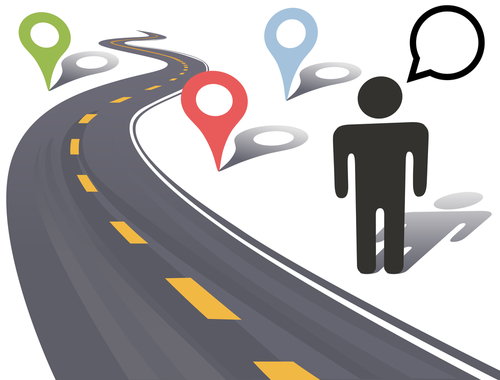Every time a customer contacts the organization or its representatives, there is an opportunity for a customer “moment of truth”. These “moments of truth” are opportunities for the organization to make a good or bad impression on the customer and are key moments in the customer journey.
This concept of ‘moment of truth’ was first introduced by Jan Carlzon, the former president of Scandinavian Airlines, in his 1986 book titled Moments of Truth. Carlzon defines the moment of truth in business as:
“Anytime a customer comes into contact with any aspect of a business, how ever remote, is an opportunity to form an impression.”
Customer journey mapping builds on this concept by providing a strategic tool to start the process of ensuring that every interaction with your organization is a positive one.
Customer journey mapping is a tool organizations use to help them see what their customers truly want — the real moment’s of truth and the ways in which customers go about achieving their needs. It is the process of tracking and describing all the experiences that customers have as they encounter a service or set of services, taking into account not only what happens to them, but also their responses to their experiences. It recognizes moments of potential failure or bad customer experiences to help define where products or services need to be strengthened. By identifying those steps in your customer experience with the greatest impact, your journey map becomes a centerpiece of your customer experience planning process. Used well, it can reveal opportunities for improvement and innovation in that experience, acting as a strategic tool to ensure every interaction with the customer is as positive as it can be.
A customer journey map is a framework that enables organizations to improve their customer experience. It documents the customer experience through their perspective, helping organizations best understand how customers are interacting with them now and helps you identify areas for improvement moving forward. Journey maps can vary from very simple step-by-step documentations of the process to complex infographics containing multiple layers of information. Great customer journey maps are rooted in data-driven research, and visually represent the different phases of customers experience based on a variety of dimensions such as sentiment, goals, touch points, and more.
Typical elements of customer journey maps include:
- Customer actions, usually broken into chronological phases of some kind.
- Goals and needs at each step in the process.
- Moments of truth, or areas of particular importance in the overall customer experience.
- Pain points, gaps and disconnects in service.
- Brand impact, satisfaction, and emotional responses.
- Business touch-points and process, including roles, systems and departments of the provider.
- Existing services and opportunities for improvement.
Benefits of Customer Journey Mapping
Customer journey mapping will enable organizations to focus on removing the anomalies and will start to allow to deliver a consistent, predictable customer experience. Customer journey mapping helps organizations to:
- See things from the customer’s point of view.
- Get it right when it really matters e.g. when emotions are highest or need greatest.
- Deliver information, messages and services at the most appropriate time.
- Deliver a seamless, streamlined experience that cuts across silos.
- Target limited resource for maximum impact.
- Plan the most efficient and effective experience by reducing duplication and shortening the length of processes.
- Identify ‘baton-change’ points where service or communication breakdown is most likely .
- Identify cheapest ‘cost to serve.’
What distinguishes Customer journey mapping from data that might be gleaned from customer relationship management systems is its equal focus on emotional insights about the customer’s experience. Customer journey mapping mixes quantitative approaches with qualitative, experiential data. Also, it can help to identify how customers are treated during each contact that takes place. It should be viewed from the standpoint of ‘how does the customer feel during a particular end-to-end experience?’
External Links:
- Using Customer Journey Maps to Improve Customer Experience (Harvard Business Review)
